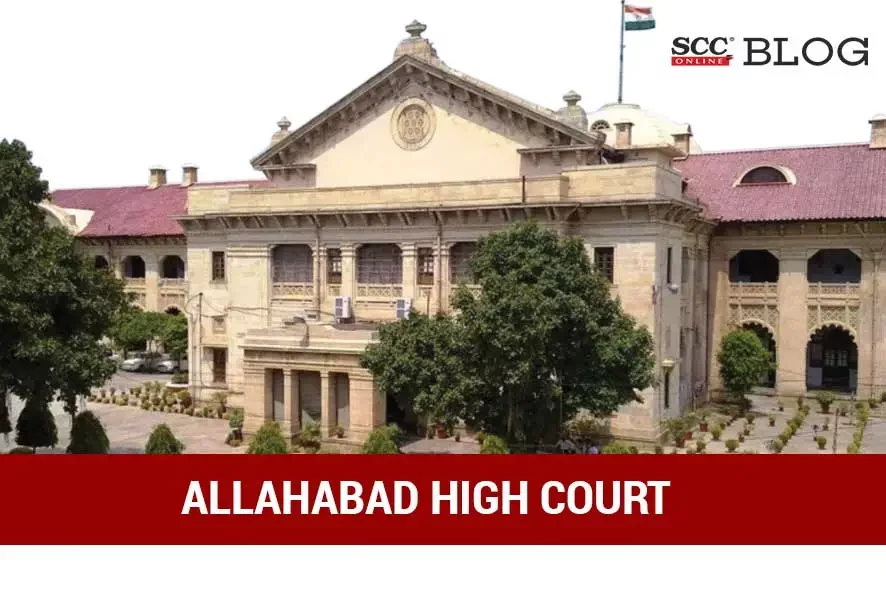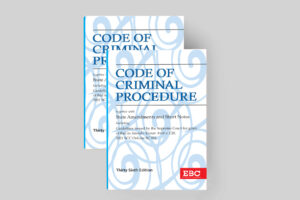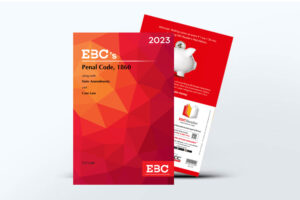Allahabad High Court: In a criminal appeal challenging the judgment and order dated 12-09-1989 passed by Additional Session Judge, whereby the convicts were convicted under Section 302 read with 34 of the Penal Code, 1860 (‘IPC’) and sentenced to undergo rigorous imprisonment for life, the division bench of Rajan Roy and Jyotsna Sharma*, JJ. modified the judgment and altered the conviction from Section 302 read with Section 34 IPC to Section 325 read with Section 34 IPC and sentenced the convict to a term of three years and a fine of Rs. 30,000/-, provided that out of the total amount of fine, Rs. 25,000/- shall be payable to the son of the deceased as compensation.
The informant submitted a written report before the police station that his father was clearing a drain. The convicts came using foul words. When his father protested, he was attacked with pieces of bricks. The incident was witnessed by the first informants. They rescued him, otherwise they would have killed his father. The victim was medically examined on 30-06-1981 at a District Hospital. Later, he died of injuries and his postmortem examination was done. The case came to be converted into Section 302 IPC. After completion of investigation, both the convicts were chargesheeted. The case was committed to the Court of Sessions. The convicts were charged for the offence under section 302 read with Section 34 IPC. They denied the charge and claimed trial. After hearing both sides, the convicts were convicted under Section 302 read with Section 34 IPC and sentenced to undergo rigorous imprisonment for life.
The Court noted that the statement given under Section 313 of Code of Criminal Procedure, 1973 (‘CrPC’), the convicts denied their involvement and said specifically that no injuries were caused by them and that they have been falsely implicated because of enmity with the informant’s side. The Court said it was established that the incident was preceded by an altercation as regards opening of drain, and the convicts threw pieces of bricks from the rooftop. They were standing on their rooftop and the deceased was in his veranda (‘aangan’). Further, it noted that the deceased was advised X-ray, but no X-ray has been produced. The doctor gave the opinion that injury was caused by blunt object and rest by friction.
The Court said that the prosecution has not explained the reasons for non-production of papers like reference slip or discharge certificate or x-ray report etc. It was duty of the Investigating Officer to collect those papers to prove that the deceased was in fact referred to medical college and was put to X-ray examination. However, this defect does not seem to have any far-reaching consequence and is liable to be ignored in the facts and circumstance of the case.
After perusing the medical examination report, the Court said that there is only one injury worth mentioning, i.e. a lacerated wound in the occipital region. This injury was only scalp deep. At that time there was no fresh bleeding. The rest of the two injuries were quite minor, of the nature of abrasions.
The Court said that the prosecution case is that the deceased sustained injury from the pieces of bricks. The act of falling explains the rest of the injuries which were abrasions. In the medical examination , the doctor found his general condition as low, and he was unconscious at that time too. All these facts cumulatively show that the deceased died of the injury caused on his head by a piece of brick.
The Court stated that unless, the defence has been able to demolish the prosecution case by impeaching the credibility of the witnesses or by demonstrating probability of false implication or by demonstrating the inherent weakness or by at least creating reasonable doubts in any other manner, of course by producing some evidence or from the prosecution evidence itself, the Court would ordinarily believe the statements given by prosecution witnesses.
The Court concluded that it did not find substance in the alternative theory given by defence that the injury was not caused by their act and rather it was a result of his slipping down in the rain, as the fatal injury was on his skull with a 17cm fracture right from frontal to temporal to occipital bone. Thus, there is a strong probability that injury of such nature and dimension is caused by the impact of a blunt object thrown with strong force. Therefore, it viewed that injury on the head of the deceased was caused by throwing of brick piece and not just by slipping down.
Concerning whether the act is covered under Section 299 IPC, the Court said that the accused threw pieces of bricks, not wielded any weapon, which is enough to show that there has not been any pre-meditation. They had not come prepared with some object which may properly fall in the category of a weapon, or where after the altercation, the convicts had come again with a plan in their mind. The circumstances show that there was an act which can be called rather reckless. When a piece of brick is thrown, it is difficult to say where it will hit the body, if at all it hits, unless somebody is so trained that he can exactly pinpoint the part of the body where he wanted to hit with the object. Moreover, it noted that it has not come in evidence that accused had specifically targeted head of the deceased for inflicting injury and he was successful in doing the same.
Further, it noted that the deceased survived for seven days, thereafter he succumbed to this injury, and viewed that a single injury caused by throwing a piece of brick, which is not a handheld weapon, cannot be categorised as an injury likely to cause death.
Thus, the Court opined that the convicts has not done the act with the intention of causing death or with the intention of causing such bodily injury as is likely to cause death. Further the act is not covered in the third part of Section 299 IPC that the act was done with a ‘knowledge’ that he is likely by such act to cause death.
Concerning whether circumstances warrant conclusion that the convicts intended to cause such an injury which has been caused or whether they had the requisite knowledge that they will cause such an injury which may ultimately cause his death, the Court said that the most fundamental formula which may be applied for deducing the requisite intention or knowledge, is whether the accused was aware of the consequences which shall follow or likely to follow as a direct consequence of his act.
The Court said that in the totality of facts and circumstances and taking into account that there was a verbal altercation and not a fight over an issue of opening the drain for release of water and there was no pre-meditation and that the convict obviously picked up a piece of brick and that he did not come prepared and armed with any weapon at all, an offence under Section 325 IPC is proved beyond reasonable doubt against accused and not the offence under Section 302 or Section 304 IPC.
Thus, it held that the Trial Court has erred in convicting the convict under Section 302 read with 34 IPC. Hence, the conviction is altered from Section 302 read with Section 34 IPC to Section 325 read with Section 34 IPC.
[Durga Prasad v. State, 2024 SCC OnLine All 323, order dated 06-02-2024]
Advocates who appeared in this case :
Counsel for Appellant: Advocate S.H.Ibrahim, Advocate Angad Kumar Vishwakarma, Advocate G.R. Chhabra, Advocate Moti Chand Yadav
Counsel for Respondent: Advocate V.K. Misra, Government Advocate O.P. Dwivedi









